 |
| Pier and boat house on False River |
We followed LA 1 and the Louisiana Scenic Bayou Byway to the southeastern edge of False River, an oxbow lake once part of the Mississippi River before it changed route and cut off the lake. The main road runs along a steep dropoff, creating a unique effect where the homes on our left were at eye level yet we were driving beside rooftops on our right. Graceful plantations with sprawling lawns dominated the road’s left side, and newer homes with lines of piers jutting out into the water stood to the right.
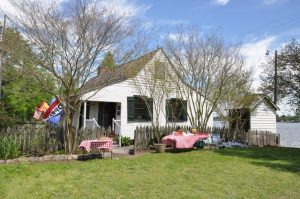 |
| Pointe Coupee Parish Museum and Tourist Center |
Colorful balloons bouncing in the wind beckoned us to stop at the Pointe Coupee Parish Museum and Tourist Center, where a table of coffee, homemade cookies and free gourds awaited our arrival. The kids darted through the small museum, not even bothering to look up before exiting out the back door to look for frogs in the sugar kettle out back. They were relatively contained within the fenced yard, so we managed to squeeze out a few minutes of conversation with the tour guides. Turns out the house itself was from nearby Parlange Plantation, and items in the museum documented life in 18th and early 19th century Louisiana. Listed on the National Register of Historic Places, the building, according to the National Park Service, is “a rare example of a log cabin type construction in a Creole type house.”
 |
| Randall Oak |
From here, we followed the balloon trail, our marker for all the open houses on the tour. Down the road was the Randall Oak, a beauty of a live oak making its way to the top of the Live Oak Registry. Although a center split gives the impression of two separate trees grown together, the tree’s owner assured us it was only one massive oak. Poydras College once stood nearby this location, where Professor James Randall wrote the poem, “Maryland, My Maryland,” which is today Maryland’s official state song. While here, we peaked next door at Mon Reve’, a lovely French Creole home that unfortunately had dropped out of the historic homes tour.
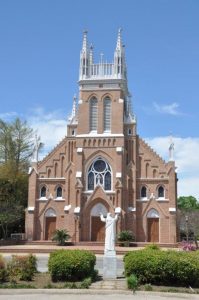 |
| St. Mary of False River |
Our map from the Visitor’s Center led us into downtown New Roads. As soon as we entered, we parked our car for a stroll along Main Street.We skirted in between buildings to access public docks where half a dozen people were out fishing for the day on False River. A few boats passed by as well, undoubtedly enjoying the warm sunshine and cool afternoon breeze. We took note of several interesting restaurants located in historic buildings, such as Ma Mama’s Kitchen, but we forewent a lengthy, sit-down lunch in favor of quick club sandwiches and grilled cheese at the local Cafe.
After eating, the kids exhausted some of their energy playing in the beautiful gardens surrounding St. Mary of False River Church, a Gothic-style church completed in 1907. A few blocks down, Pointe Coupee Parish Court House is another focal point of the town, resembling a medieval castle erected on Main Street.
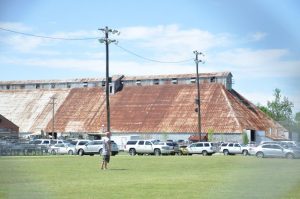 |
| Market at the Mill |
Back in the car, we visited more historic homes on the list, such as the LeJeune House, home to a family with 12 children–all of whom never married. The Samson House, also known as Pointe Coupee Bed and Breakfast, and the Pourciau House were another two landmarks on the tour. Our final stop in downtown was the Market at the Mill, a retired cottonseed oil mill that happened to be hosting its three-day, annual “shopping extravaganza” of antique and vintage items. From the look of the parking lot, it appeared to be a very popular destination.
The town and surrounding area is quite lovely, and we drove around a while longer just sightseeing while the kids snoozed in the backseat. For the route home, we detoured on LA78 toward Frisco and on to Livonia, searching for an Indian mound we had read about in the book New Roads and Old Rivers: Louisiana’s Historic Pointe Coupee Parish. Built between 700 AD and 1200 AD by the Coles Creek Culture, the mound is uniquely out of place next to a Dollar General Store. However, upon contacting the town, we learned that it was donated by the property owners to the town, and plans are in the works for highlighting its prominence in Louisiana’s history.
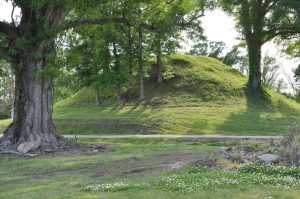 |
| Livonia Mound |
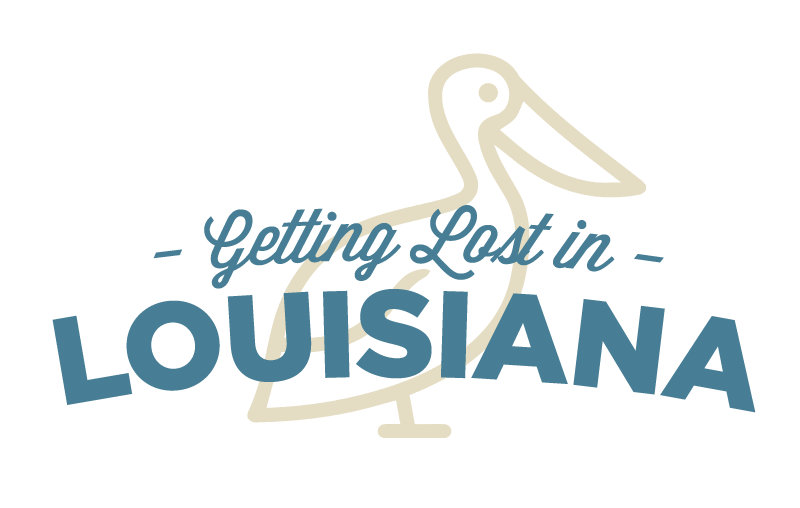
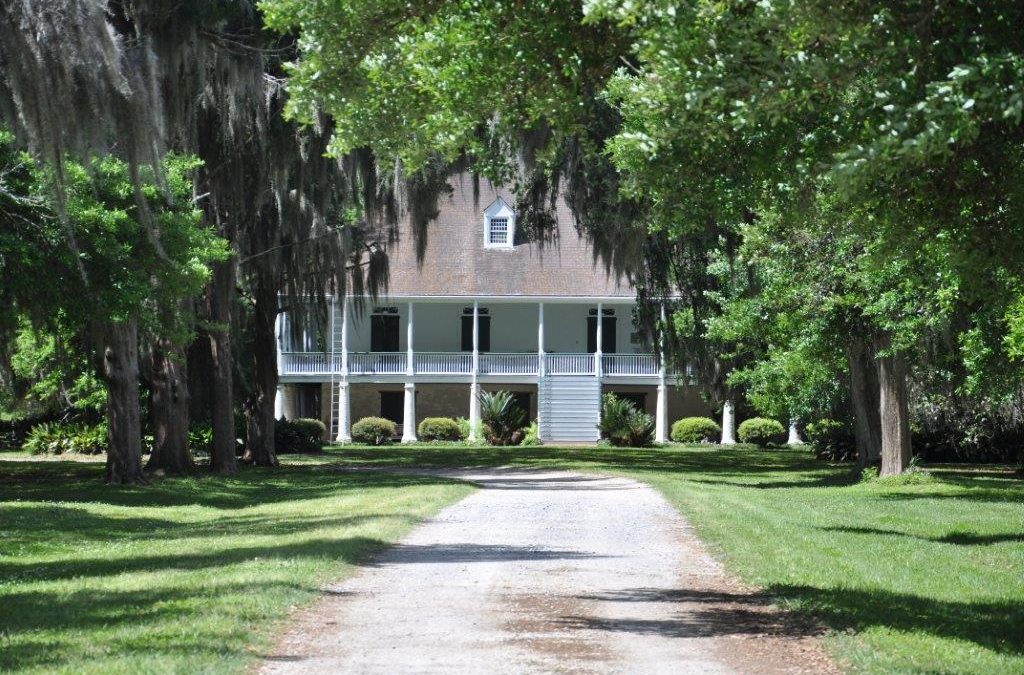
Well it looks like you've planned our weekend trip! Thanks. I LOVE your site!!!!!